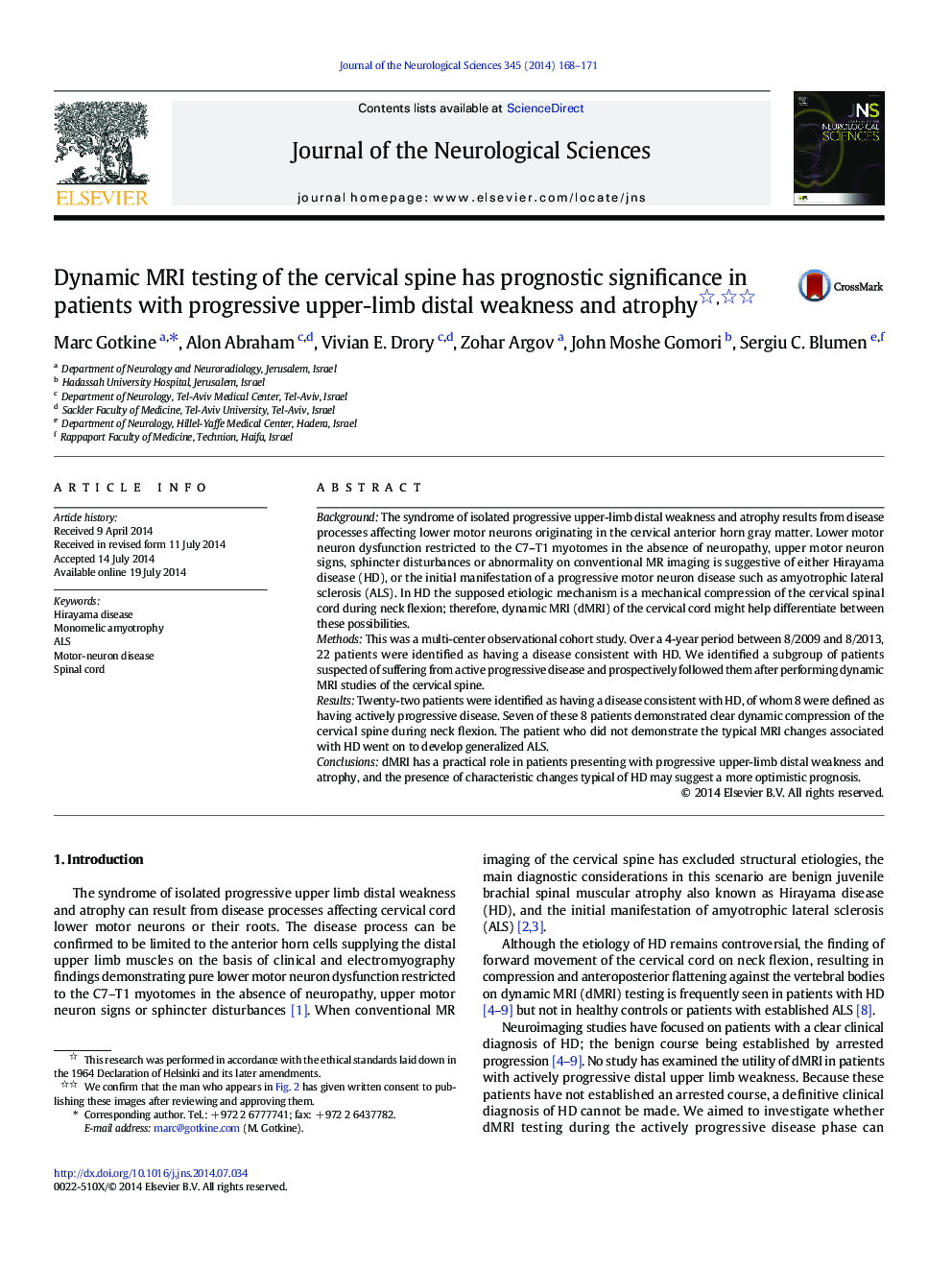| کد مقاله | کد نشریه | سال انتشار | مقاله انگلیسی | نسخه تمام متن |
|---|---|---|---|---|
| 1913363 | 1535117 | 2014 | 4 صفحه PDF | دانلود رایگان |

• Compression of the cervical cord in flexion is characteristic of Hirayama disease.
• The prognostic value of spinal MRI in progressive disease was evaluated.
• Seven of 8 patients with progressive disease had typical MRI changes.
• The patient without typical MRI changes eventually developed ALS.
• MRI may be useful in predicting Hirayama disease vs progression to ALS.
BackgroundThe syndrome of isolated progressive upper-limb distal weakness and atrophy results from disease processes affecting lower motor neurons originating in the cervical anterior horn gray matter. Lower motor neuron dysfunction restricted to the C7–T1 myotomes in the absence of neuropathy, upper motor neuron signs, sphincter disturbances or abnormality on conventional MR imaging is suggestive of either Hirayama disease (HD), or the initial manifestation of a progressive motor neuron disease such as amyotrophic lateral sclerosis (ALS). In HD the supposed etiologic mechanism is a mechanical compression of the cervical spinal cord during neck flexion; therefore, dynamic MRI (dMRI) of the cervical cord might help differentiate between these possibilities.MethodsThis was a multi-center observational cohort study. Over a 4-year period between 8/2009 and 8/2013, 22 patients were identified as having a disease consistent with HD. We identified a subgroup of patients suspected of suffering from active progressive disease and prospectively followed them after performing dynamic MRI studies of the cervical spine.ResultsTwenty-two patients were identified as having a disease consistent with HD, of whom 8 were defined as having actively progressive disease. Seven of these 8 patients demonstrated clear dynamic compression of the cervical spine during neck flexion. The patient who did not demonstrate the typical MRI changes associated with HD went on to develop generalized ALS.ConclusionsdMRI has a practical role in patients presenting with progressive upper-limb distal weakness and atrophy, and the presence of characteristic changes typical of HD may suggest a more optimistic prognosis.
Journal: Journal of the Neurological Sciences - Volume 345, Issues 1–2, 15 October 2014, Pages 168–171